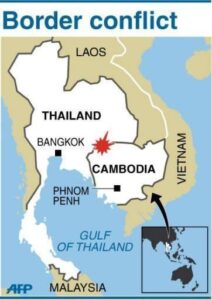The Ramsar Convention on Wetlands: A Student Guide
The Ramsar Convention on Wetlands is an international treaty aimed at protecting and sustainably using wetlands worldwide. These vital ecosystems support biodiversity and provide freshwater, food, and other resources. The treaty was signed in Ramsar, Iran, in 1971, and came into effect in 1975.
Today, 90% of UN member states, spanning all continents, are part of this treaty, known as Contracting Parties. The annual World Wetlands Day is celebrated on February 2nd, marking the signing of the convention.
The Mission
The Convention focuses on the “conservation and wise use of all wetlands”, aiming to promote sustainable development through local, national, and international efforts.
Why Are Wetlands Important?
Wetlands are among the richest ecosystems on Earth, providing:
- Essential Services: Clean water, flood control, and climate regulation.
- Biodiversity: Habitat for countless species, including migratory birds.
- Livelihoods: Resources for millions of people worldwide.
Yet, wetlands are under threat from pollution, climate change, and human activities, making their conservation critical.
What Counts as a Wetland?
The Ramsar Convention uses a broad definition of wetlands, including:
- Natural wetlands: Lakes, rivers, swamps, mangroves, coral reefs.
- Man-made wetlands: Fishponds, rice paddies, reservoirs, and salt pans.
The Three Pillars of the Ramsar Convention
Contracting Parties commit to:
- Wise Use: Ensuring wetlands are used sustainably.
- Ramsar List: Designating key wetlands as Wetlands of International Importance.
- International Cooperation: Working together to manage shared wetlands and species.
Ramsar Sites in India 🌏
India has 85 Ramsar Sites (as of November 2024), the highest in South Asia! Tamil Nadu leads with 18 Ramsar Sites.
The latest additions in 2024 include:
- Nanjarayan Bird Sanctuary (Tamil Nadu)
- Kazhuveli Bird Sanctuary (Tamil Nadu)
- Tawa Reservoir (Madhya Pradesh)
Fun Facts About Ramsar Sites
- The world’s first Ramsar Site: Cobourg Peninsula, Australia (1974).
- The country with the most Ramsar Sites: United Kingdom (175).
- Largest Ramsar-protected area: Bolivia.
- India’s largest Ramsar Site: Sundarban Wetland (West Bengal).
- India’s oldest Ramsar Site: Chilika Lake (Odisha), designated in 1981.
Largest Ramsar Sites in India
The following are the Ramsar Sites with the largest areas in India, showcasing their ecological significance:
| Ramsar Site | State | Area (km²) |
|---|---|---|
| Sundarban Wetland | West Bengal | 4,230 |
| Vembanad-Kol Wetland | Kerala | 1,512.5 |
| Chilika Lake | Odisha | 1,165 |
| Kolleru Lake | Andhra Pradesh | 901 |
| Ashtamudi Wetland | Kerala | 614 |
Smallest Ramsar Sites in India
Here are the Ramsar Sites with the smallest areas, highlighting their unique yet compact ecosystems:
| Ramsar Site | State | Area (km²) |
|---|---|---|
| Renuka Lake | Himachal Pradesh | 0.2 |
| Vembannur Wetland | Tamil Nadu | 0.2 |
| Nanda Lake | Goa | 0.42 |
| Vedanthangal Bird Sanctuary | Tamil Nadu | 0.4 |
| Karaivetti Bird Sanctuary | Tamil Nadu | 0.44 |
Oldest Ramsar Sites in India
These Ramsar Sites were the first to be designated in India, marking their long-standing importance for conservation:
| Ramsar Site | Year Designated |
|---|---|
| Chilika Lake | 1981 |
| Keoladeo Ghana National Park | 1981 |
By understanding and valuing wetlands, we can ensure their protection for future generations. Let’s celebrate these incredible ecosystems and work towards their sustainable use! 🌊💚
Here is the list of all 85 Ramsar Sites in India (as of November 2024) presented in a table format:
| S.No. | Ramsar Site | State/UT | Designated Year | Area (km²) |
|---|---|---|---|---|
| 1 | Kolleru Lake | Andhra Pradesh | 2002 | 901 |
| 2 | Deepor Beel | Assam | 2002 | 40 |
| 3 | Kanwar (Kabar) Taal | Bihar | 2020 | 26.2 |
| 4 | Nagi Bird Sanctuary | Bihar | 2023 | 2 |
| 5 | Nakti Bird Sanctuary | Bihar | 2023 | 3.3 |
| 6 | Nanda Lake | Goa | 2022 | 0.42 |
| 7 | Khijadia Wildlife Sanctuary | Gujarat | 2021 | 6 |
| 8 | Nalsarovar Bird Sanctuary | Gujarat | 2012 | 123 |
| 9 | Thol Lake | Gujarat | 2021 | 6.99 |
| 10 | Wadhvana Wetland | Gujarat | 2021 | 10.38 |
| 11 | Bhindawas Wildlife Sanctuary | Haryana | 2021 | 4.11 |
| 12 | Sultanpur National Park | Haryana | 2021 | 142.5 |
| 13 | Chandra Taal | Himachal Pradesh | 2005 | 0.49 |
| 14 | Pong Dam Lake | Himachal Pradesh | 2002 | 156.62 |
| 15 | Renuka Lake | Himachal Pradesh | 2005 | 0.2 |
| 16 | Ranganathittu Bird Sanctuary | Karnataka | 2022 | 5.18 |
| 17 | Magadi Kere Conservation Reserve | Karnataka | 2024 | 0.5 |
| 18 | Ankasamudra Bird Conservation | Karnataka | 2024 | 0.98 |
| 19 | Aghanashini Estuary | Karnataka | 2024 | 4.8 |
| 20 | Ashtamudi Wetland | Kerala | 2002 | 614 |
| 21 | Sasthamkotta Lake | Kerala | 2002 | 3.73 |
| 22 | Vembanad-Kol Wetland | Kerala | 2002 | 1512.5 |
| 23 | Bhoj Wetland | Madhya Pradesh | 2002 | 32 |
| 24 | Sakhya Sagar | Madhya Pradesh | 2022 | 2.48 |
| 25 | Sirpur Wetland | Madhya Pradesh | 2022 | 1.61 |
| 26 | Yashwant Sagar | Madhya Pradesh | 2022 | 8.22 |
| 27 | Tawa Reservoir | Madhya Pradesh | 2024 | 200 |
| 28 | Lonar Lake | Maharashtra | 2020 | 4.27 |
| 29 | Nandur Madhameshwar | Maharashtra | 2019 | 14 |
| 30 | Thane Creek | Maharashtra | 2022 | 65.21 |
| 31 | Loktak Lake | Manipur | 1990 | 266 |
| 32 | Pala Wetland | Mizoram | 2021 | 18.5 |
| 33 | Ansupa Lake | Odisha | 2021 | 2.31 |
| 34 | Bhitarkanika Mangroves | Odisha | 2002 | 650 |
| 35 | Chilika Lake | Odisha | 1981 | 1165 |
| 36 | Hirakud Reservoir | Odisha | 2021 | 654 |
| 37 | Satkosia Gorge | Odisha | 2021 | 981.97 |
| 38 | Tampara Lake | Odisha | 2021 | 3 |
| 39 | Beas Conservation Reserve | Punjab | 2019 | 64 |
| 40 | Harike Wetland | Punjab | 1990 | 41 |
| 41 | Kanjli Wetland | Punjab | 2002 | 1.83 |
| 42 | Keshopur-Miani Conservation Res. | Punjab | 2019 | 34 |
| 43 | Nangal Wildlife Sanctuary | Punjab | 2019 | 1 |
| 44 | Ropar Wetland | Punjab | 2002 | 13.65 |
| 45 | Keoladeo National Park | Rajasthan | 1981 | 28.73 |
| 46 | Sambhar Lake | Rajasthan | 1990 | 240 |
| 47 | Chitrangudi Bird Sanctuary | Tamil Nadu | 2021 | 2.6 |
| 48 | Gulf of Mannar Marine Reserve | Tamil Nadu | 2022 | 526.72 |
| 49 | Kanjirankulam Bird Sanctuary | Tamil Nadu | 2022 | 0.96 |
| 50 | Karikili Bird Sanctuary | Tamil Nadu | 2022 | 0.584 |
| 51 | Koonthankulam Bird Sanctuary | Tamil Nadu | 2021 | 0.72 |
| 52 | Pallikaranai Marsh Reserve Forest | Tamil Nadu | 2022 | 12.475 |
| 53 | Pichavaram Mangrove | Tamil Nadu | 2022 | 14.786 |
| 54 | Point Calimere WLS | Tamil Nadu | 2002 | 385 |
| 55 | Suchindram Theroor Wetland Complex | Tamil Nadu | 2022 | 0.94 |
| 56 | Udhayamarthandapuram BS | Tamil Nadu | 2022 | 0.44 |
| 57 | Vaduvur Bird Sanctuary | Tamil Nadu | 2022 | 1.12 |
| 58 | Vedanthangal Bird Sanctuary | Tamil Nadu | 2022 | 0.4 |
| 59 | Vellode Bird Sanctuary | Tamil Nadu | 2022 | 0.77 |
| 60 | Vembannur Wetland Complex | Tamil Nadu | 2022 | 0.2 |
| 61 | Karaivetti Bird Sanctuary | Tamil Nadu | 2024 | 4.5 |
| 62 | Longwood Shola Reserve Forest | Tamil Nadu | 2024 | 1.16 |
| 63 | Nanjarayan Bird Sanctuary | Tamil Nadu | 2024 | 1.3 |
| 64 | Kazhuveli Bird Sanctuary | Tamil Nadu | 2024 | 1,513 |
| 65 | Rudrasagar Lake | Tripura | 2005 | 2.4 |
| 66 | Hokera Wetland | UT of J&K | 2005 | 13.75 |
| 67 | Hygam Wetland Conservation Res. | UT of J&K | 2022 | 8.02 |
| 68 | Shallbugh Wetland Conservation | UT of J&K | 2022 | 16.75 |
| 69 | Surinsar-Mansar Lakes | UT of J&K | 2005 | 3.5 |
| 70 | Wular Lake | UT of J&K | 1990 | 189 |
| 71 | Tso Kar | UT of Ladakh | 2020 | 95.77 |
| 72 | Tsomoriri | UT of Ladakh | 2002 | 120 |
| 73 | Bakhira WLS | Uttar Pradesh | 2021 | 28.94 |
| 74 | Haiderpur Wetland | Uttar Pradesh | 2021 | 69 |
| 75 | Nawabganj Bird Sanctuary | Uttar Pradesh | 2019 | 2 |
| 76 | Parvati Arga Bird Sanctuary | Uttar Pradesh | 2019 | 7 |
| 77 | Saman Bird Sanctuary | Uttar Pradesh | 2019 | 5 |
| 78 | Samaspur Bird Sanctuary | Uttar Pradesh | 2019 | 8 |
| 79 | Sandi Bird Sanctuary | Uttar Pradesh | 2019 | 3 |
| 80 | Sarsai Nawar Jheel | Uttar Pradesh | 2019 | 2 |
| 81 | Sur Sarovar (Keetham Lake) | Uttar Pradesh | 2020 | 4.31 |
| 82 | Upper Ganga River | Uttar Pradesh | 2005 | 265.9 |
| 83 | Asan Barrage | Uttarakhand | 2020 | 4.44 |
| 84 | East Kolkata Wetlands | West Bengal | 2002 | 125 |
| 85 | Sundarban Wetland | West Bengal | 2019 | 4,230 |






